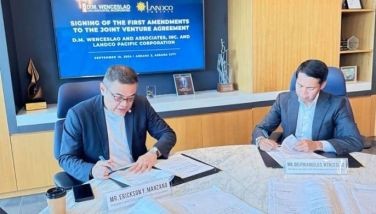Indigenous Peoples as stewards of Philippine biodiversity
As one of the 18 mega-biodiverse countries in the world, safeguarding its rich biodiversity is important for the Philippines. Nearly half the plants and animals found in the country exist nowhere else on Earth. The country is home to two-thirds of the earth’s biodiversity and between 70 percent and 80 percent of the world’s plant and animal species. These wonders thrive within 228 identified Key Biodiversity Areas.
Thus, the Philippines has committed to the ambitious Kunming-Montreal Global Biodiversity Framework (KMGBF) which aims to address biodiversity loss, restore ecosystems and protect indigenous peoples’ rights. It includes protection and conservation of at least 30 percent of the world’s land, fresh water and sea by 2030 (also known as the 30x30 targets).
The ambitious GBF targets will entail a whole of society approach that is inclusive and leaves no one behind. This means having the national government agencies, local government units, indigenous peoples and local communities, civil society organizations, academic and research institutions and the private sector, all doing their share. Appropriate governance mechanisms, increased financing, local innovative solutions, capacity-building, gender mainstreaming and youth participation will definitely be crucial as we work towards the 30x30 targets.
One cannot deny the fact that indigenous peoples are significant on-site stewards of the rich biodiversity of the Philippines. In fact, there is an almost a 1:1 correspondence of Key Biodiversity Areas and ancestral domains in the Philippines. To emphasize, many of the remaining Key Biodiversity Areas that are not protected areas are ancestral domains. This data provide tangible evidence that the traditional knowledge, systems and practices of Indigenous Peoples that are deeply rooted in their culture and belief are in fact sustainable. Thus, the Indigenous Peoples, being the holders of vast natural resources, are in the forefront of environmental management.
The theme of this year’s International Day for Biodiversity (celebrated last May 22) – “Be part of the plan” – is a reminder of the significance of indigenous peoples’ inclusion and participation in the work towards biodiversity protection.
The United Nations Development Program (UNDP) in the Philippines, alongside our partners, has made it a commitment to safeguard the environmental and social rights of the IP communities in our biodiversity work. In key areas, we ensure that provisions of the United Nations Declaration on the Rights of Indigenous Peoples are integrated. We uphold the Philippine Constitution, the Indigenous Peoples Rights Act and country’s Free Prior and Informed Consent policy in all initiatives dealing with IP communities.
With support from the Global Environment Facility (GEF), the Department of Environment and Natural Resources (DENR) and the National Commission on Indigenous Peoples, UNDP Philippines, since 2010, has worked with 17 IP communities on delineating boundaries and mapping precious ecosystems, conducting inventory of resources and documentation of indigenous knowledge, systems and practices. 25 IP organizations were also supported in their establishment of community-led livelihood initiatives. It is important to engage the indigenous communities as resource group rather than as beneficiaries alone.
Another major milestone to date is the inclusion of a salient provision on Indigenous Communities Conserved Areas (ICCAs) in the enhanced National Integrated Protected Areas System law.
The GEF-supported UNDP-DENR Biodiversity Management Bureau Philippine ICCA Project (PICCAP) provided opportunities to ensure indigenous peoples were well represented in the drafting of the ICCA Bill, which recognizes the contributions and the effective conservation measures by the indigenous peoples. Select IP organizations were provided technical and financial assistance by PICCAP and the 5th Operational Phase of the GEF Small Grants Program for the establishment and operation of biodiversity-friendly enterprises.
The ongoing efforts led by the DENR-BMB to update the Philippine Biodiversity Strategy and Action Plan ensures its alignment with the GBF, including the 30x30 target. One of the key developments is for the ICCAs to be considered as a stand-alone conservation measure alongside protected areas and Other Effective Area-Based Conservation Measures (OECMs). UNDP, through our GEF supported projects, including the GBF Early Action Support, the BD Corridor, Access and Benefit Sharing, the Small Grants Program and the Biodiversity Finance Initiative projects, support this undertaking for it serves as an avenue for a participatory and inclusive process.
Moreover, UNDP, together with other development partners, have supported DENR in institutionalizing the recognition, management and strengthening of Local Conservation Areas as OECMs, in strengthening the access and benefits of IP communities from the country’s wealth of genetic resources and in collaborating with other stakeholders and utilizing a landscape approach on improving biodiversity corridor management.
With the climate crisis and biodiversity loss facing humanity, there is no better time than now to renew commitment and to ensure the inclusion of all sectors to be #PartOfThePlan in bolstering efforts for the achievement of our 30X30 targets #ForNature. Our lives are intertwined with nature. Protecting biodiversity is essential for preserving the planet’s natural capital and safeguarding our future.
* * *
Selva Ramachandran is the Philippines’ Resident Representative of the UN Development Program (UNDP).
- Latest
- Trending



























